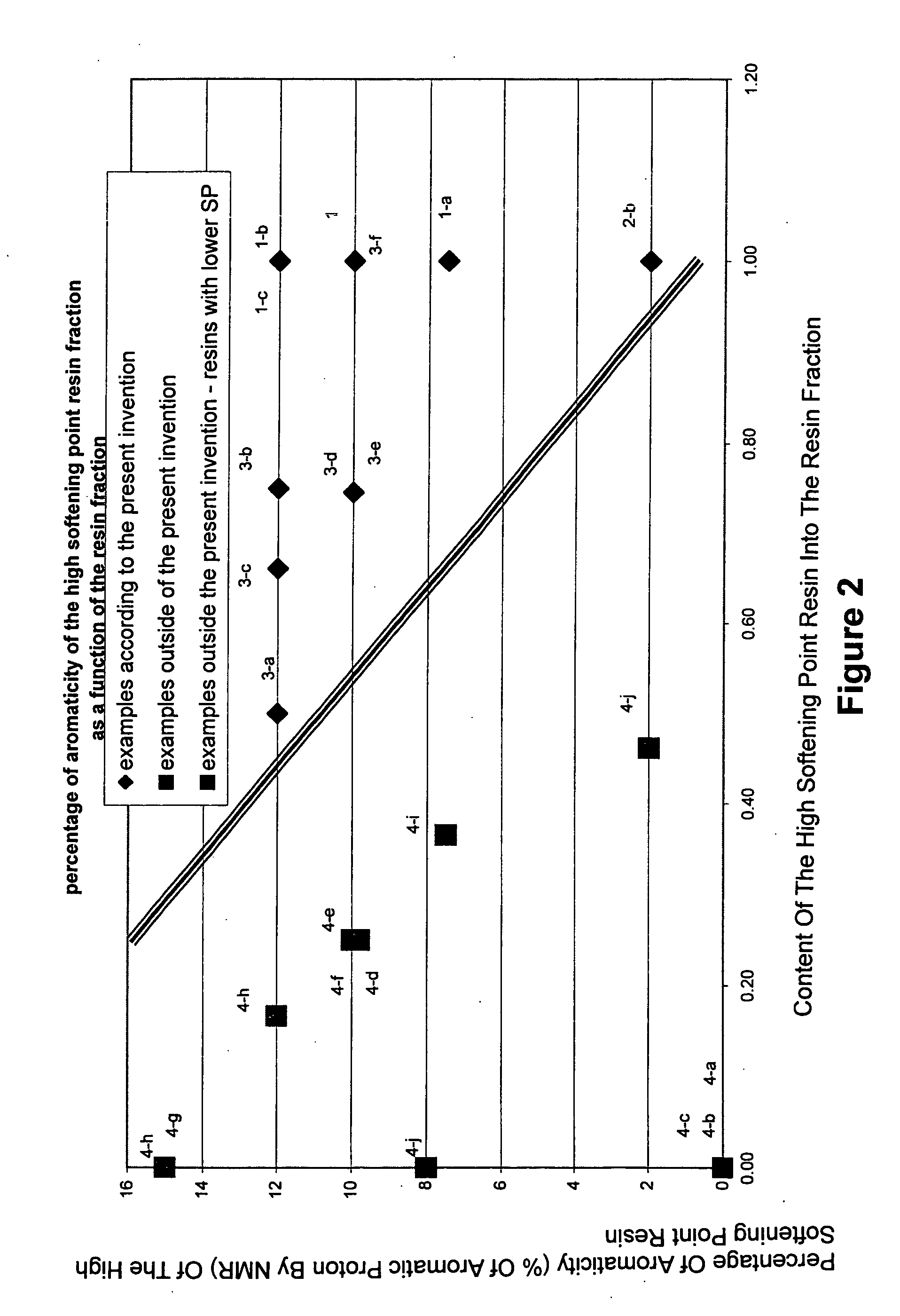Low application temperature hot melt adhesive
a technology of hot melt adhesives and low application temperature, which is applied in the direction of adhesives, absorbent pads, bandages, etc., can solve the problems of high heat distortion or deterioration of film or non-woven substrates, inability to teach how and inability to achieve conventional elastic attachment. achieve the same level of performance and high bond strength level
- Summary
- Abstract
- Description
- Claims
- Application Information
AI Technical Summary
Benefits of technology
Problems solved by technology
Method used
Image
Examples
example 1
[0156] Table 1a illustrates three different compositions suitable according to the present invention, containing three different polymers, with viscosity at 120° C., and values of G′ and G″ in specific conditions. Table 1b illustrates the initial creep resistance results of the compositions described in Table 1a when coated at 125° C. to 130° C., when the adhesive add-on is 12 and 15 gsm, in flat or wrap spray configuration. Table 1c shows the one-week-aged creep test results. From these results, it is clear that the three formulas are suitable to fulfill the requirements the present invention has described.
example 2
[0157] Table 2a illustrates four different compositions suitable according to the present invention, containing three different resins, with viscosity at 120° C., and values of G′ and G″ in specific conditions. Table 2b illustrates the initial creep test results of the compositions described in Table 2a when coated at various temperatures from 120° C. to 130° C., when the adhesive add-on is 12 and 15 gsm, in flat or wrap spray configuration. Table 2c shows the one-week-aged creep test results. From these results, it is clear that the four formulas are suitable to fulfill the requirements the present invention has described.
example 3
[0158] Table 3a illustrates six different compositions suitable according to the present invention, containing six different tackifying resin fractions where only part are high softening point aromatic-modified tackifying resin grades, with viscosity at 120° C., and values of G′ and G″ in specific conditions. Table 3b illustrates the initial creep test results of the compositions described in Table 3a when coated at various temperatures from 125° C. to 130° C., when the adhesive add-on is 12 and 15 gsm, in flat or wrap spray configuration. Table 3c shows the one-week-aged creep test results. From these results, it is clear that the six formulas are suitable to fulfill the requirements the present invention has described.
PUM
| Property | Measurement | Unit |
|---|---|---|
| softening point | aaaaa | aaaaa |
| softening point | aaaaa | aaaaa |
| temperature | aaaaa | aaaaa |
Abstract
Description
Claims
Application Information
 Login to View More
Login to View More - R&D
- Intellectual Property
- Life Sciences
- Materials
- Tech Scout
- Unparalleled Data Quality
- Higher Quality Content
- 60% Fewer Hallucinations
Browse by: Latest US Patents, China's latest patents, Technical Efficacy Thesaurus, Application Domain, Technology Topic, Popular Technical Reports.
© 2025 PatSnap. All rights reserved.Legal|Privacy policy|Modern Slavery Act Transparency Statement|Sitemap|About US| Contact US: help@patsnap.com


